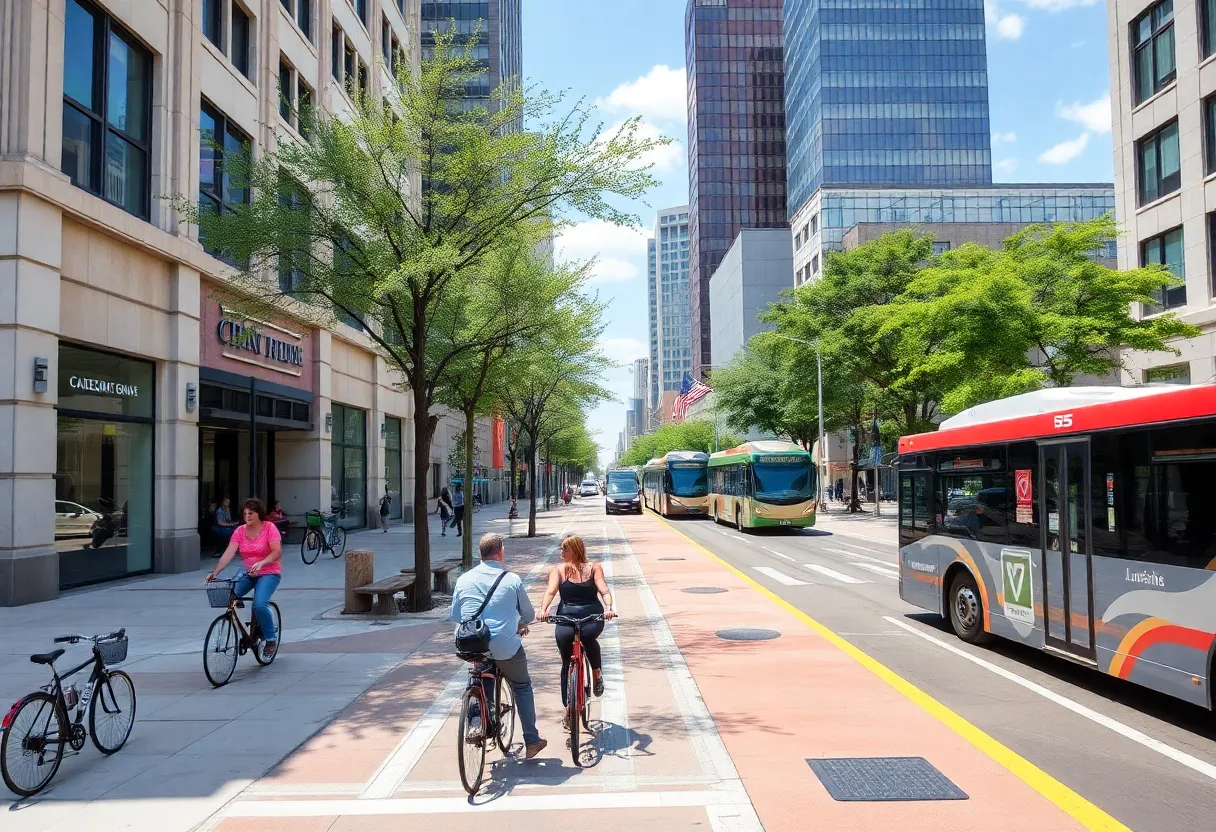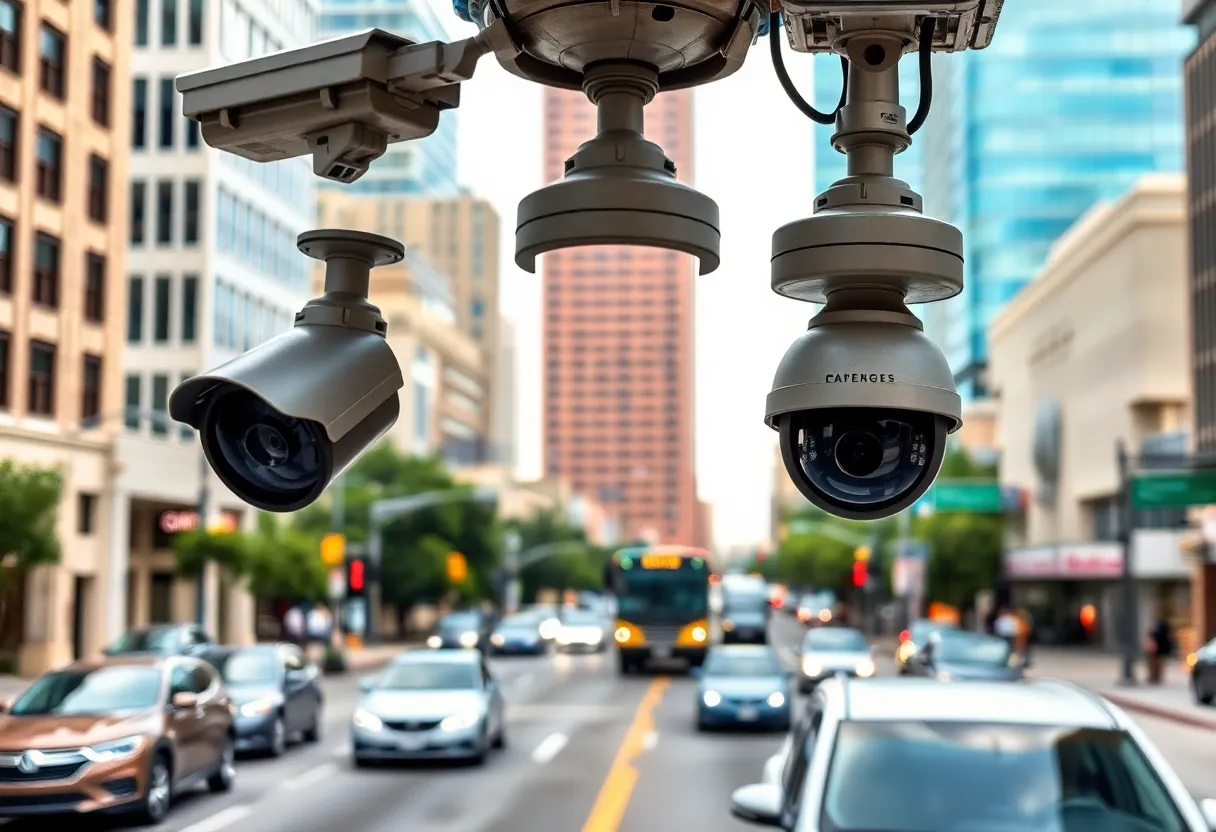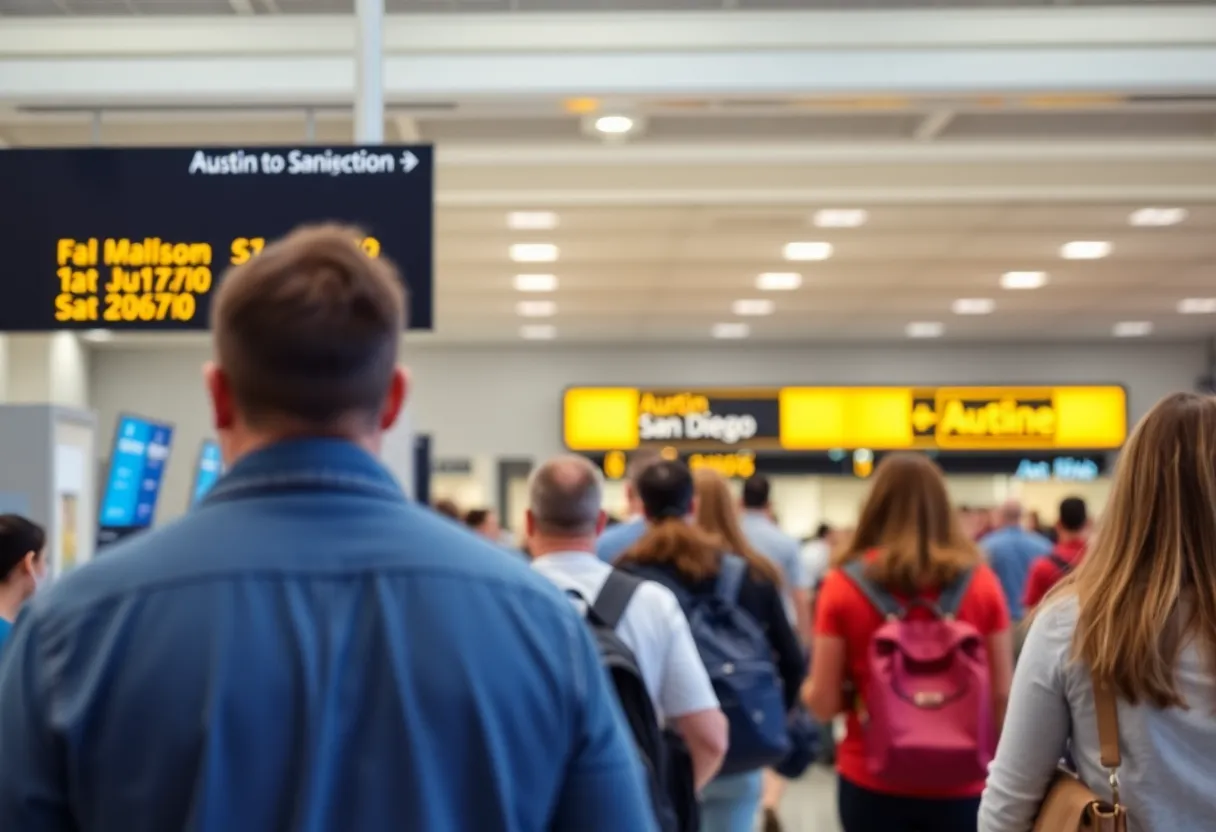News Summary
Austin is launching a comprehensive transportation overhaul to improve mobility in its downtown area, outlined in the Austin Core Transportation Plan. The initiative, estimated to cost over $1 billion, responds to a significant population surge. Key features include redesigning priority corridors to prioritize pedestrians, cyclists, and public transit. The city aims to enhance safety while reducing car dependence and implementing strategic improvements with funding sourced from federal grants and upcoming bond elections. The Austin City Council is set to review the plan in April.
Austin is embarking on a significant transportation overhaul aimed at enhancing mobility in its downtown area. The Austin Core Transportation Plan outlines ambitious improvements that will involve collaboration between overlapping mega-projects over the next decade, with an estimated cost exceeding $1 billion. This plan is a direct response to the rapid growth the city has experienced, which saw a remarkable 254% increase in downtown population between 2000 and 2020.
What Happened
The City Council’s Mobility Committee has reviewed the draft proposal of the Austin Core Transportation Plan and generally supports its vision. The committee has, however, noted several concerns regarding its implementation. Key points of focus are enhancing safety for vulnerable road users while simultaneously addressing curbside access and delivery demands.
Proposed Improvements
The plan identifies four priority corridors that will undergo redesign: Fifth, Sixth, Seventh, and Eighth streets. Each corridor will see an emphasis on reallocating road space to accommodate pedestrians, bicyclists, and public transit users:
- Fifth Street: A dedicated transit-only lane from Bowie to Guadalupe, an eastbound protected bike lane, and wider sidewalks to create the Mexican American Heritage Corridor.
- Sixth Street: Installation of westbound bike infrastructure and enhanced pedestrian crossings to ensure safety, as well as necessary access for delivery operations in the entertainment district.
- Seventh and Eighth Streets: Redesign aimed at continuous east-west bike and transit connectivity.
Additionally, improvements will be made along Red River, Brazos, and streets from Ninth to 12th to establish a cohesive downtown multimodal network.
Systemwide Strategies
The plan includes broader systemwide strategies such as:
- Converting some one-way streets into two-way streets to promote better traffic flow
- Expanding micromobility infrastructure, such as bike-sharing programs
- Implementing dynamic curb management to optimize parking and loading zones
The overarching goal is to reduce car dependence, enhance safety, and prepare for significant upcoming projects, including Project Connect and the Interstate 35 rebuild.
Concerns and Challenges
While the plan presents a vision for improved transportation, it faces challenges relating to mid-block conflicts concerning curbside loading and parking impacting the proposed bike lanes. The necessity of detailed project development to navigate trade-offs between bike lane safety and curbside access has been acknowledged replete with an understanding that safety for all road users, particularly vulnerable individuals, remains paramount.
Official Response and Future Considerations
As of now, the committee has not taken action to recommend the plan; they will seek further feedback from various boards and commissions before making any decisions. The Austin City Council is expected to consider the plan in April, reflecting on the comprehensive feedback received to date.
Funding and Implementation
To fund these ambitious transportation initiatives, sources being explored include federal grants and proceeds from the city’s anticipated 2026 bond election. There are also considerations for implementing low-cost, quick-win solutions to demonstrate early benefits prior to larger investments. Strategic coordination is essential for effective phasing, integrating this plan with ongoing projects to maximize impact and efficiency.
Current Mobility Landscape
Today’s mobility statistics reveal that 60% of commuters in Austin still rely on single-occupant vehicles, while only 16% utilize public transportation. The Austin Core Transportation Plan seeks to address this imbalance with a vision rooted in sustainability and accessibility.
In summary, the Austin Core Transportation Plan lays out a comprehensive framework aimed at revamping downtown mobility, setting the stage for a more connected and pedestrian-friendly urban environment amidst ongoing growth and infrastructure challenges.
Deeper Dive: News & Info About This Topic
HERE Resources
Austin Prepares for Major Convention Center Revamp
Zoox Expands Autonomous Vehicle Testing in Austin
Proposed Legislation to Rename Segment of I-35 in Austin
Travis County Aims for Zero Traffic Fatalities by 2050
Austin Revises E-Scooter and E-Bike Policies
Austin Schools Benefit from Eco-Friendly Sidewalk Project
SXSW 2026 Announces Major Format Changes
Tragic 17-Vehicle Crash in Austin Claims Five Lives
Severe Tornado Outbreak Hits Missouri with No Fatalities
Dallas-Fort Worth Drives Texas’ Economic Growth
Additional Resources
- Austin Monitor: Vision for Transforming City Core
- Wikipedia: Austin, Texas
- KXAN: Austin Plan Details
- Google Search: Austin Core Transportation Plan
- Community Impact: Parking in Bike Lanes
- Google Scholar: Transportation in Downtown Austin
- Austin Monitor: Downtown Commission Questions Scope
- Encyclopedia Britannica: Transportation Planning
- Austin Chronicle: Austin’s Transportation Future
- Google News: Austin Transportation 2025








